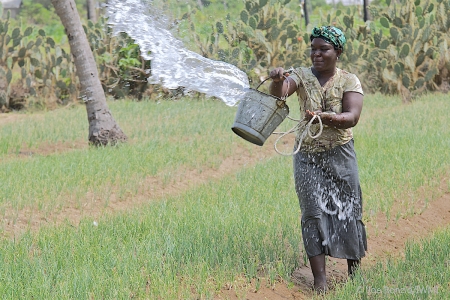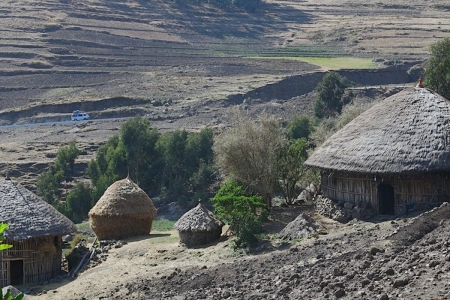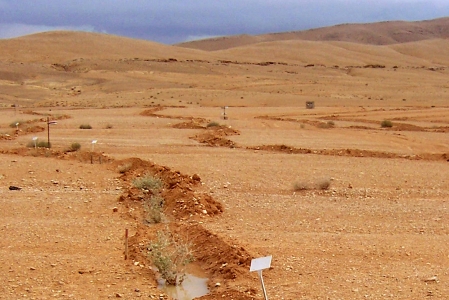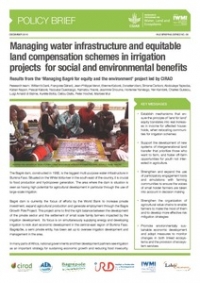Farmers around the Bagré dam in Burkina Faso are being asked to exchange their rainfed farm land for land in a big irrigation scheme. Sounds like a great opportunity... but is it? Bagrépole, the agency overseeing irrigation development in the area, predicts that irrigated agriculture will be 4 times more productive than purely rainfed farming in this area. Agro-entrepreneurs are expected to invest large sums and a scheme is being built to compensate small holder farmers who've been relocated. Sounds like a win-win situation, but it's not that simple.
The irrigation scheme has the potential to simultaneously improve livelihoods and reduce food insecurity among local communities while also offering opportunities for the private sector to benefit from irrigated agri-business. However, these two positive outcomes will only be achieved if some important challenges are overcome.
The Bagré dam, constructed in 1992, is the biggest multi-purpose water infrastructure in Burkina Faso. Situated on the White Volta River in the south-east of the country, it is crucial to food production, hydropower generation and the regulation of water flows. For example, it helps to reduce flooding that would otherwise have a dramatic impact on downstream areas of north-east Ghana. Areas near the dam are seen as having high potential for agricultural development, particularly through the use of large-scale irrigation.
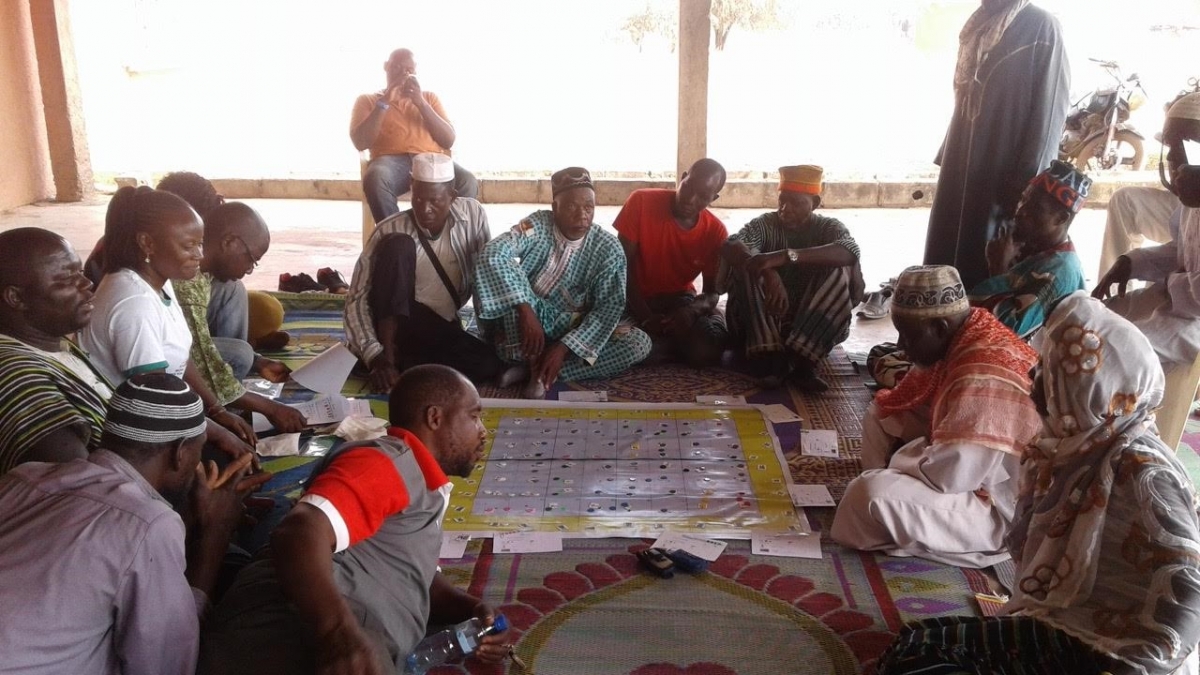
The Bagré area is currently the focus of efforts by the Government of Burkina Faso and the World Bank to increase private investment, expand agricultural production and generate employment. This will be done by allocating land to agricultural investors and small-scale family farmers affected by development in order to increase the irrigated area. Bagrépôle, a semi private entity, has been set up to oversee and manage irrigation development and operate a compensation scheme for relocated small holder farmers. Bagrépôle applies a 'land for land' principle, offering farmers one hectare in the irrigation scheme for every four hectares of rainfed land they held previously (4:1 ratio). They have made comprehensive efforts to identify and map households and individuals displaced or otherwise affected by extension of the irrigation system. Yet the compensation scheme and management of the irrigation area could still be improved.
One problem with the scheme is that the 4:1 ratio on which land is allocated to relocated farmers is based on rather optimistic scenarios about productivity and the anticipated market prices of irrigated products.
A second issue is that the 4:1 ratio aims to maintain, rather than improve, small holder farmer's revenues. Wouldn't it be preferable to improve rural incomes rather than just maintain the status quo?
A third challenge is presented when the economics of the situation are analyzed. Small holder farmers, including those with plots of land in the irrigation scheme, are unable to stay above the poverty line unless they also have access to rainfed production. Rainfed production remains key to their incomes and food security. Many newly displaced households that receive plots of land in the irrigation scheme lose access to their rainfed land in exchange. That's how the deal works.
Another key challenge, stemming from population growth, is the increasingly unsustainable compensation mechanism that is mimicking traditional, intergenerational land transfer practice. Until now, the head of a household in these communities was obliged to secure a minimum area of land for his descendants so that they could use it to secure their livelihoods and produce food. As part of the compensation scheme, land is given to those with traditional and inherited claims regardless of whether or not they actually plan to farm the land. Whereas others, who might be keen to farm (the youth, women), may be unable to do so because they will face difficulties in accessing irrigated land. As populations grow, the plots of land handed down to the next generation are split into smaller and smaller pieces and divided among more and more people. This is no longer sustainable.
So what options are available for tailoring irrigation investments like Bagré so that they are productive while also ensuring they minimize any negative impacts, enhance equity, and promote healthy ecosystems? How can big projects be designed to promote economic development through the expansion of agri-business while supporting smaller-scale family farming through irrigation schemes? How can these big projects ensure that the needs of affected communities are heard and taken into account?
These are some of the questions that a research project, led by CIRAD and WLE and supported by CGIAR Fund Donors, aimed to answer. The project conducted in-depth field work using a participatory engagement approach called Companion Modelling, as well as community surveys and key informant interviews over a two year period.
The research project culminated five key recommendations for decision makers to improve equity, promote healthy ecosystems and ensure that the needs of affected communities are heard and taken into account. Decision makers should:
- Establish mechanisms that ensure that the equitable principle of 'land for land' translates into real increases in income for affected households, when relocating communities during irrigation development projects
- Support the development of new systems of intergenerational land transfer that prioritize those who want to farm, and foster off-farm opportunities for youth not interested in agriculture.
- Strengthen and expand the use of participatory engagement tools and simulations with farming communities to ensure the voices of small holder farmers are taken into account in decision making
- Strengthen the organization of agricultural value chains to enable farmers to make the most of them and to develop more effective risk mitigation strategies
- Promote environmentally sustainable economic development and adopt measures to monitor changes in both linked ecosystems and the provision of ecosystem services
It is crucial that investments in agricultural development, large water infrastructure and irrigation schemes are environmentally sound and sustainable. Equally important is the need to ensure that the benefits of these investments are realised by both local farming communities and the private sector entities that invest in them. Putting these recommendations into action will help to ensure that these objectives are achieved.
Learn more about this research project in this policy brief.



